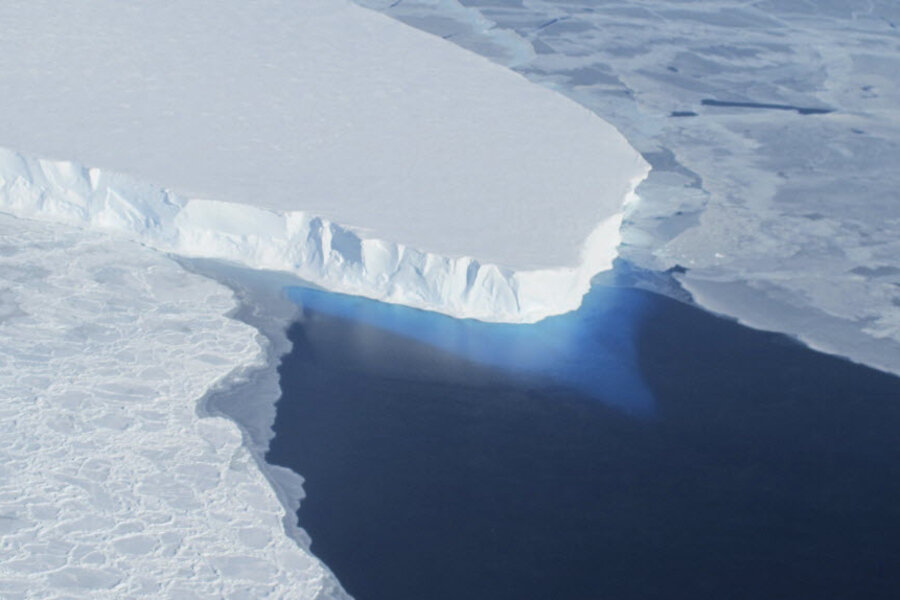Scientists find 'surprisingly high' heat beneath West Antarctic Ice Sheet
Loading...
Geothermal heat under the West Antarctic Ice Sheet has been found to be “surprisingly high” according to a new study, pointing to another threat to the already fragile ice sheet that is contributing directly to global sea level rise.
The readings from instrument results studying temperatures in sediments below Subglacial Lake Whillans, which lies beneath a half-mile beneath the West Antarctic Ice Sheet, were published on July 10 in the online journal Science Advances. Recent studies have shown the ice sheet is one of several on the frozen continent that is melting so fast “it’s like a switch was flipped, the Monitor reported in May.
The geothermal heat flux measured in the study amounted to about 285 milliwatts per square meter, equivalent to the heat output of one small LED Christmas tree light, Andrew Fisher, a professor of Earth and planetary sciences at UC Santa Cruz and lead author of the paper said in a statement released by the National Science Foundation.
While that may not sound significant, the study authors say the heat could be adding yet another source of heat stress to a fragile ice sheet already being warmed by several other sources. Scientists now need to get a better sense of the amount of geothermal heat under the rest of the ice sheet, Slawek Tulaczyk, co-author of the study and a professor of Earth and planetary sciences at UC Santa Cruz, said in the statement.
“It is important we get this number right if we are going to make accurate predictions of how the West Antarctic Ice Sheet will behave in the future, how much it is melting, how quickly ice streams flow, and what the impact might be on sea level rise,” he told NSF. “I waited for many years to see a directly measured value of geothermal flux from beneath this ice sheet.”
Dr. Fisher said that the geothermal heating doesn’t account for the alarming rate of ice loss documented in West Antarctica.
“The ice sheet developed and evolved with the geothermal heat flux coming up from below – it’s part of the system,” he added in a statement. “But this could help explain why the ice sheet is so unstable.”
West Antarctica is considered less stable than other ice sheets on the continent because much of the ice sheet rests on land below sea level. Recent studies have found that warm ocean currents circulating under the ice sheet may also be contributing to glacier loss. The entire continent is also riddled with subglacial lakes and rivers. Scientists believe that as temperatures rise in these underground water systems, ice melt could accelerate. They recently began to suspect that geothermal heat – primarily from subglacial volcanoes – could be contributing to this melting of basal ice.
Last year NASA described the eventual loss of a major section of the West Antarctic Ice Sheet as “unstoppable,” as the Monitor's Pete Spotts reported.
But Fisher added that they only have geothermal measurements from one location on the ice sheet, and that heat flux is likely to vary from place to place.
“We don’t know how localized these warm geothermal conditions might be,” he said. “This is a region where there is volcanic activity, so this measurement may be due to a local heat source in the crust.”
In terms of global sea level rise, scientists are more concerned about the potential impacts of climate change on Antarctic ice melt than its more publicized cousin at the North Pole. While Arctic ice melts and freezes seasonally, Antarctic ice has been frozen for centuries, and if it melts it would discharge significant amounts of new water into the world’s oceans. A study in March found that melting ice in East Antarctica could ultimately raise sea levels by 11 feet, as the Monitor reported.








